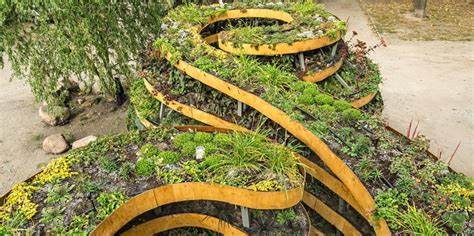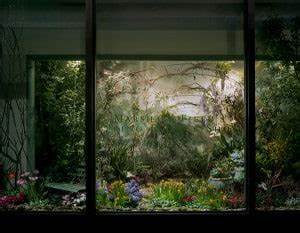
Vertical Gardens: Transforming Desolate Spaces into Green Oases
Introduction
Vertical gardens have gained popularity in recent years as a creative solution to transform desolate spaces into vibrant green oases. These innovative structures offer numerous environmental benefits and contribute to a healthier, more sustainable future.
Historical Background
The concept of vertical gardens dates back centuries, with notable early examples found in ancient civilizations like the Hanging Gardens of Babylon. However, it was not until the 20th century that vertical gardens gained recognition as a viable solution for urban greening. Pioneers in the field, such as Patrick Blanc, revolutionized the concept with their innovative designs and techniques.
Key Concepts and Definitions
Vertical gardens, also known as living walls or green walls, are structures that incorporate vegetation on a vertical surface to create a living and breathing space. The primary goal is to transform otherwise barren or unutilized areas into lush green environments, promoting biodiversity and improving the overall quality of life.

Main Discussion Points
Benefits of vertical gardens
Vertical gardens offer a range of benefits. They improve air quality by naturally filtering pollutants and absorbing carbon dioxide, promoting healthier living conditions. They also increase biodiversity by providing habitats for various plant and animal species, contributing to a more balanced ecosystem. Additionally, vertical gardens help regulate temperatures and reduce energy consumption by providing shade and insulation to buildings, leading to significant energy savings.
Design and implementation considerations
Designing and implementing a successful vertical garden requires careful consideration. The selection of suitable plant species is crucial to ensure adaptability to the environment and the vertical structure. Additionally, the choice of materials and structures should be based on factors such as weight, drainage, and compatibility with the building. Regular maintenance and proper irrigation are also essential to sustain the health and vitality of the plants.
Social and psychological impacts of vertical gardens
Vertical gardens have profound social and psychological impacts. They contribute to enhanced well-being and improved mental health by creating visually appealing and calming spaces. Vertical gardens also foster community engagement and social cohesion, providing a shared space for people to connect with nature and each other. Furthermore, these gardens offer educational opportunities for sustainable living, promoting awareness and understanding of ecological systems.

Case Studies or Examples
One remarkable vertical garden project is located in a commercial building in Singapore. This green wall spans multiple floors, showcasing a variety of plant species and creating a stunning visual display. The project serves as a testament to the possibilities of incorporating vertical gardens into urban environments. Another inspiring example is the transformation of a disused parking lot into a vertical garden in New York City. This project not only provided an innovative solution to limited space but also demonstrated the potential to revitalize unused areas with lush vegetation, providing both aesthetic value and environmental benefits.
Current Trends or Developments
Advances in vertical garden technology continue to improve the efficiency and effectiveness of these structures. Innovations such as modular systems, automated irrigation, and lightweight materials make vertical gardens more accessible and sustainable. The integration of vertical gardens into urban planning and architecture is also becoming increasingly prevalent. Urban designers and architects recognize the value of incorporating green spaces into their projects, resulting in the seamless integration of vertical gardens into building facades and public spaces. Ongoing research explores the benefits of vertical gardens in different contexts, including healthcare facilities, schools, and residential areas, further supporting their widespread implementation.
Challenges or Controversies
Limited space and structural constraints pose challenges for implementing vertical gardens in densely populated urban areas. Innovative solutions such as vertical farming and adaptive reuse of existing structures are being explored to overcome these limitations. Maintenance and long-term sustainability are critical considerations for vertical gardens. Proper care and regular monitoring are necessary to ensure the longevity and health of the plants. Ongoing maintenance can be a challenge, requiring dedicated resources and expertise. Cost considerations and financial viability are often debated when it comes to vertical gardens. While initial investments may be higher compared to traditional greening methods, the long-term benefits, such as energy savings and improved well-being, can outweigh the costs.

Future Outlook
The potential for the expansion of vertical gardens in urban areas is immense. As cities continue to grow, the need for sustainable and green spaces becomes increasingly important. Vertical gardens offer a practical and visually appealing solution to this demand. The integration of vertical gardens in sustainable development strategies is gaining traction worldwide. Governments and organizations recognize the value of incorporating nature into the urban fabric, leading to policies and initiatives that encourage and support vertical garden projects. Advancements in technology and innovation will continue to drive the evolution of vertical gardens, making them more efficient, cost-effective, and sustainable.
Conclusion
In summary, vertical gardens are transforming desolate spaces into green oases, bringing nature back into the concrete jungle. With a rich history, numerous benefits, and a promising future, vertical gardens have become an integral part of sustainable urban development. These innovative structures not only enhance the aesthetic appeal of urban areas but also contribute to improved air quality, increased biodiversity, and enhanced well-being.




